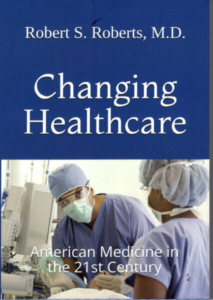
The U.S. has the greatest healthcare in the world. The U.S. has the worst life expectancy statistics among developed nations. Can both of these statements be true? Unfortunately, the answer is yes. Many of the leading doctors and medical institutions are found in the U.S. and people from all over the world come here for the latest and greatest medical treatments. But you might live longer if you live in another country.
The graphic below shows life expectancy for the U.S. compared to other developed countries:

Brianna Abbott, writing in The Wall Street Journal, tells us much of the gap in life expectancy is due to deaths among working-age adults, according to Dr. Steven Woolf, a life-expectancy researcher at the Virginia Commonwealth University. “Americans die earlier and are sicker than people in other high-income countries,” he said. “This has been true for a long time, and the trend is getting worse.” Drug overdoses from opioids, alcohol, suicide and chronic diseases drive most of those early deaths, researchers said. The U.S. also took a bigger hit from Covid-19, even among younger adults who were at lower risk.
That was in part because Americans were already in worse health and more vulnerable to the virus’s toll. The U.S. obesity rate is nearly double the average of peer nations, disrupting prior decades of progress against heart disease. Around a third of U.S. adults have had multiple chronic conditions, the highest rate among our peers, according to the Commonwealth Fund.
Rates for conditions including hypertension and chronic obstructive pulmonary disease have held relatively steady in recent decades, and the rising prevalence of diabetes is in part because people are living longer with the disease, researchers say. But the U.S. still has higher rates of these conditions compared with peer nations.

Many preventable chronic diseases are related to four major risk factors: cigarette smoking, excessive alcohol use, physical inactivity and poor nutrition. In the U.S., people get less exercise, moving less than some European counterparts, studies have shown. The nation’s Western-style diet is heavy in sugars, processed meat and unhealthy fats. Americans also consume more ultra-processed foods, surveys suggest, and such diets have been linked to increased risks of obesity, Type 2 diabetes and some cancers.
The U.S. is arguably the best in the world at treating complex diseases, says Dr. Philip Landrigan, director of the global public health program at Boston College. But it is worse at providing access to care and services that help manage or prevent illness, he says.
Wealthy Americans have lower rates of chronic diseases and live longer than their low-income counterparts. The U.S. also has a wider gap in death rates between wealthy and poor Americans than European countries, a recent study found. But the wealthiest Americans still had mortality rates comparable to the poorest Northern and Western Europeans.

